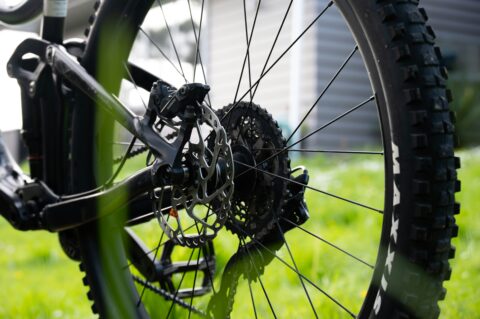Introduction: The Evolution of Transportation
Buckle up, history buffs and tech enthusiasts alike, because we’re about to take a thrilling ride through the captivating evolution of transportation! From ancient methods that relied on sheer human power to cutting-edge technologies like the Hyperloop, the story of how we move from point A to point B is nothing short of extraordinary. So hop aboard as we journey through time and explore how transportation has shaped our world in ways beyond imagination!
Ancient Methods of Transportation
In ancient times, transportation was a far cry from the high-speed trains and airplanes we rely on today. People had to get creative when it came to getting from point A to point B.
From simple foot travel to using animals like horses and camels as modes of transport, our ancestors navigated vast distances with ingenuity and resourcefulness.
Waterways played a crucial role in early transportation, with boats and rafts enabling trade and exploration across rivers, lakes, and oceans.
The invention of the wheel revolutionized how goods were transported over land, leading to the development of carts and chariots for faster travel.
Ancient civilizations like the Romans built extensive road networks that connected their vast empire, facilitating commerce and communication between distant regions.
The Impact of Industrialization on Transportation
The Industrial Revolution transformed the way people and goods moved from place to place. With the invention of steam engines, railways became a vital mode of transportation, connecting cities and industries like never before. The creation of canals allowed for more efficient shipping routes, opening up trade opportunities across continents.
As factories boomed and urban centers expanded, the need for faster transportation grew exponentially. Steamships revolutionized sea travel, making long-distance voyages quicker and more reliable. The advent of bicycles provided an affordable means of personal transport for many individuals.
Industrialization spurred innovations in road construction, leading to the development of paved roads that could accommodate motor vehicles. The introduction of automobiles revolutionized personal mobility, paving the way for modern transportation systems we rely on today.
The Advent of Automobiles and Airplanes
The 20th century ushered in a new era of transportation with the advent of automobiles and airplanes. The invention of the automobile revolutionized personal travel, giving individuals the freedom to explore beyond their immediate surroundings. Suddenly, long distances were no longer obstacles but opportunities for adventure.
On the other hand, airplanes transformed global connectivity, shrinking vast oceans and continents into manageable distances. Air travel made it possible for people to traverse the world in a matter of hours rather than weeks or months. The sky became a highway for dreams and aspirations to take flight.
Both automobiles and airplanes symbolize mankind’s relentless pursuit of innovation and progress. They represent our desire to push boundaries, break limits, and defy gravity – quite literally in the case of airplanes. These modes of transport have not only shaped how we move from place to place but also how we perceive distance and time itself.
In many ways, automobiles and airplanes have become synonymous with freedom, exploration, and endless possibilities. It’s hard to imagine a world without these marvels of engineering that continue to inspire wonder and awe today.
Modern Innovations in Transportation
In today’s fast-paced world, transportation innovations continue to revolutionize the way we travel. From electric vehicles and autonomous cars to high-speed trains and drones, technology is reshaping the way we move from point A to point B.
Electric cars are leading the charge towards sustainable transportation, reducing carbon emissions and promoting environmental conservation. With advancements in battery technology, these vehicles are becoming more efficient and affordable for consumers worldwide.
Autonomous vehicles are on the horizon, promising safer roads and increased mobility for individuals with disabilities or limited access to transportation. These self-driving cars use artificial intelligence to navigate traffic patterns and road conditions with precision.
High-speed trains like Japan’s Shinkansen and France’s TGV have set a new standard for rail travel, offering passengers a smooth and efficient mode of transport between cities. These trains reduce travel time significantly while providing comfort and convenience.
Drones are taking flight in delivery services, medical emergencies, agriculture monitoring, filming industries, etc., showcasing their potential to revolutionize logistics in ways we never imagined possible. Their agility allows them to reach remote areas quickly without traditional infrastructure limitations.
As we look ahead towards the future of transportation innovation shows no signs of slowing down as engineers work towards developing flying cars air taxis supersonic jets vacuum tube systems space tourism projects further blurring lines between science fiction reality making our world more interconnected than ever before.
The Future of Transportation: Hyperloop and Beyond
Imagine a world where traveling at the speed of sound is not just a concept from science fiction movies, but a reality ready to revolutionize transportation as we know it. The Hyperloop, proposed by Elon Musk in 2013, aims to transport passengers and cargo through vacuum-sealed tubes at speeds exceeding 700 mph.
With the potential to reduce travel times drastically and decrease carbon emissions significantly, this futuristic mode of transportation could reshape our cities and economies. Beyond the Hyperloop, other innovations such as flying taxis, autonomous vehicles, and high-speed trains are on the horizon.
As technology continues to advance rapidly, we can expect even more groundbreaking developments in transportation that will make our world more interconnected than ever before. The future of transportation is excitingly unpredictable with endless possibilities waiting to be explored.
Conclusion: How Transportation Shapes Our World
Transportation has undoubtedly played a significant role in shaping our world throughout history. From the humble beginnings of ancient methods like walking and using animals for transportation to the revolutionary advancements in automobiles, airplanes, and now hyperloop technology, it is clear that transportation has continuously evolved to meet the needs of society.
The ability to move people and goods efficiently from one place to another has not only connected distant regions but also facilitated economic growth, cultural exchange, and technological innovation. Transportation networks have transformed how we live, work, and interact with the world around us.
As we look towards the future of transportation with developments like hyperloop systems and other cutting-edge technologies on the horizon, it is exciting to imagine how these innovations will further revolutionize our way of life. The possibilities for faster travel times, reduced environmental impact, and increased connectivity are endless.
In conclusion,
transportation will continue to shape our world in ways we may not even comprehend yet. It is a fundamental aspect of human civilization that drives progress and opens up new opportunities for exploration and development. As we embrace new modes of transport and push boundaries beyond what was once thought possible, we pave the way for a future where mobility knows no limits.







